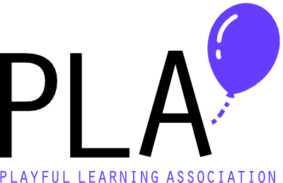Pixar-Pitch Perfection: Crafting Study Snippets with Storytelling Magic
Lead Author: Erin Wilkie
Additional authors: Ann Marie Raos
Timetable: Thursday Session 8: 16:15-17:00, Outdoors
Description:
Before coming to the session (or if you can’t make it!), take some time to interact with this digital resource.

Ever find yourself on either side of “less-than-engaging assignment”? When students are unengaged in the assignment, effort is impacted, and the evaluation becomes more challenging as well. Transform learning experiences with some playful tweaks and create a more engaging way to present and evaluate content that is typically assessed through reflections, presentations, or even research dissemination.
The Pixar Pitch is a term adopted from the successful film company (Pixar Animation Studios) that explains a formula to organize a story using brief prompts. While more routinely used in the communications field, Ford-Baxter & Faulkner (2023) explored the effectiveness of an adapted approach within higher education to support students with synthesizing and communicating complex information about their research. Ford-Baxter & Faulkner (2023) studied the tool of storytelling using the Pixar Pitch to assist students with developing clear and concise scholarly communication skills to become more effective communicators, develop collaboration skills, summarize key ideas through an improvisational technique, and engage with their playful self – an aspect of our youthful personalities that often gets left behind when moving further through adulthood.
Grab your popcorn because we are going to put on a show as we transform colleague reflections with the Pixar Pitch technique!
What will participants be doing:
– In our session participants will have the opportunity to learn about the Pixar Pitch and how it can be used to summarize learning material into nano learning formats. This six-prompt technique (Once upon a time…, Every day…, One day…., Because of that…, Because of that…, and Until finally…) sets the stage for a playful way to share larger pieces of information in a condensed storyline format. As social interaction and peer learning are valued aspects of the Playful Learning Conference, our nano learning experience will be live, not digital, but the foundations of the knowledge can certainly be transferred to digital mediums, like fast-paced social media platforms, to meet engagement preferences of a generation that learns more from short videos than traditional lesson formats.
– After getting a grasp on the instructional strategy through a facilitated exemplar, participants will work in small groups to discuss a common educational topic, discover shared experiences and strategies, and develop a collaborative reflection into a six-prompt storyline. To turn up the fun and spark elements of surprise and disguise, participant groups will collaboratively perform their nano reflections using a fast-paced narrated storytelling activity –costume props encouraged!
– Following the group storytelling pitches, the larger group will reconvene to discuss the usefulness of a Pixar Pitch style learning strategy in their work and life spaces. If group members consent, the group exemplars can be videoed as artifacts for demonstrating the technique and provided to participants for use and advocacy for playful learning among their colleagues and learning communities.
References, web links and other resources:
Reference
Ford–Baxter, T., & Faulkner, K. (2023). Teaching undergraduates to develop concise and compelling scholarly communication through storytelling. Reference Services Review, 51(1), 3-12. 10.1108/RSR-08-2022-0030
Resource for Pixar Pitch Method: https://www.charlesleon.uk/blog/the-pixar-pitch-and-the-22-rules-of-storytelling7102019
Table 1: Sample of Pixar Pitch connected to higher education and a research paper
1. Once upon a time … playfulness in adult education was frowned upon, stigmatized as a lesser form of scholarly knowledge acquisition (Introduction)
2. Every day … teachers struggled with student engagement in traditional style lectures and educational approaches (Research Problem)
3. One day … a graduate student explored the existing literature connected to playful learning to uncover evidence to support its use in higher education (Literature Review)
4. Because of that … a rationale for a playful pedological practice and framework was formed (Research Rationale)
5. Because of that … the graduate student was able to present the pedagogy to higher education colleagues and support them with trialing the approach in their classrooms (Dissemination of Results)
6. Until finally … higher education colleagues were equally inspired by the degree of student engagement and success that playful learning has contributed to their classrooms, prompting them to further the research (Conclusion and Opportunities for Future Research)
